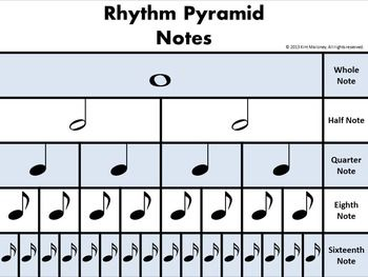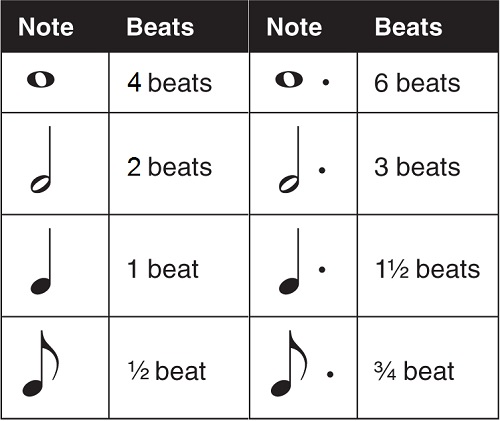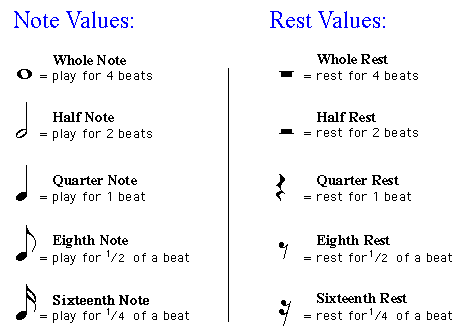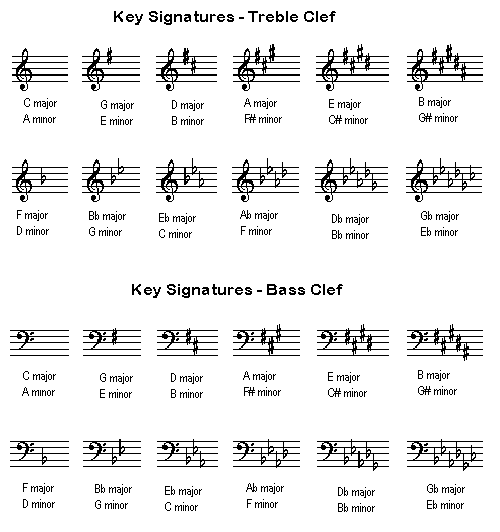Rhythm and Timing
When playing music, it is notated with different notes that represent different values. There are five to six major notes that you will play with. The whole note, which counts for four beats, the half note, which is half a hole note, making it worth two beats. Next is the quarter note, which is a quarter of a hole note, making it worth one beat. Then there is the eight note, which is worth an eight of a hole note. The last, most important of the notes that you will play is the sixteenth note, it is, you guessed it, a sixteenth a beat of a whole note. A dot can be added next to any of these notes, extending the amount of time you count it by half of the notes values. If I have a dotted half note, if will count for three beats because the dot add on half of the value of the half note, which would be one, thus giving me three beats. Similarly, there are rests that signify that you stop playing and leave a rest.



These notes are placed in a staff of lines and spaces. I'm not going to focus on how to read a staff here. Each piece of music has a time signature. Here are some of the most common time signatures: 4/4, 3/4, 2/4. 2/2, and 3/8. Below is a youtube video that explains time signatures really well. The top number of a time signature tells you how many beats should be in a measure. If the top number of the time signature is four, there should be four full beats in the measure. If there is a two on top of the time signature, there should be two full beats in the measure. The bottom number is a little bit harder to explain; I direct you to the video bellow.
Other important things include ties, which are between to notes of the same pitch. You hold the note for the value of the two notes combined. Slurs are notes that are connected; they can be the same note or a different note. You play them in the same bow. There is also something called syncopation. When something is syncopated, the beat is offset and it gives the music a jazzy feel. Also make sure to pay attention to any tempo markings and play at that speed.
Key Signatures and Scales
Every piece of music has a key. A key is comprised of sharps and flats. There are two types of key signatures, major keys and minor keys. There are quite a few keys, to many to mention. But the most common ones you will probably play in when first starting out are C Major, D Major, G Major and maybe Bb Major. Here is an example of a few different key:.

These keys are also used to make scales. There are major scales and minor scales. There are three different types of minor scales, a natural minor, a chromatic minor, and a Melodic minor scale. The way these scales are formed is by using the circle of fifths. Below is a video that shows how these scales are formed.
The same youtube channel that create the video above has multiple videos on creating minor chromatic, melodic, natural, and other scales and things that have to do with music theory, Here's the link.